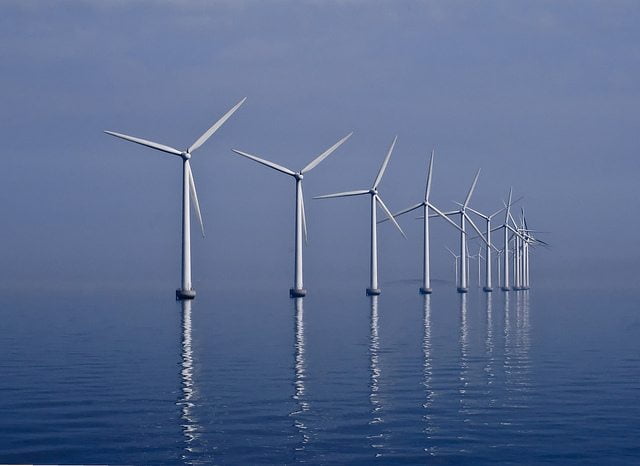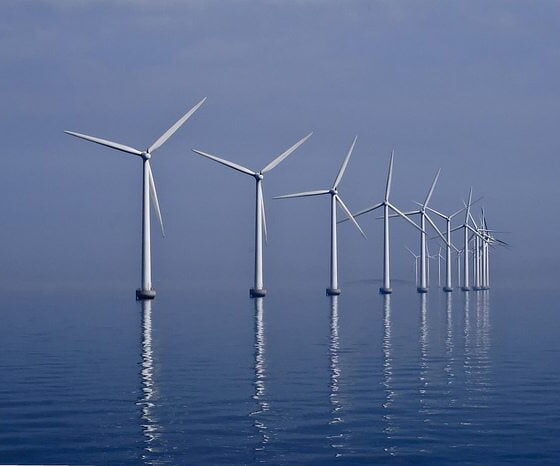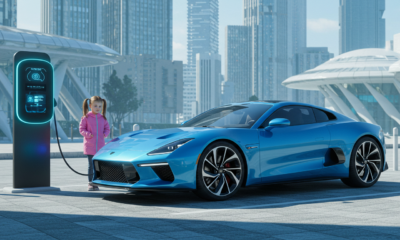

Energy
Don’t write off renewable subsidies just yet
A lot of recent debate has focused on renewable subsidies – how much they cost, what their value is and whether they can or should continue, writes Jerry Hamilton.
The full benefits of a thriving renewables industry will take years to realise and, to some, costly subsidies now seem hard to justify. This view is short sighted, but equally we must envision a time when subsidies come to an end. Renewable energy does no one any favours by becoming a bottomless pit for taxpayer’s money.
The rightful role of subsidies is to get a socially useful but disadvantaged market to maturity. Renewable energy generation offers the same commoditised output as fossil fuels – kilowatts hours of energy fed into your home or business. But they are years behind in terms of supply chains, R&D and infrastructure. They can compete, but they need support to get to that stage. Subsidies so far have brought us a long way towards that point, but we are not there just yet. We should continue until we are.
This presents us with a couple of questions: What do we hope to achieve from renewables? And at what point do we agree we’ve reached that point and stop subsidising them?
The first question has several answers. The most obvious is that they reduce our reliance on fossil fuels. This is not about renewables replacing fossil fuels – that will take decades. It is about getting them to a stage where they can play a viable part in the energy mix and can be supplied at a price energy companies, and ultimately consumers, are willing to pay for.
We are not yet expecting wind to compete with natural gas on a per kilowatt hour basis. But with power plants close to capacity, adding renewables to the mix can avoid the need to turn on another power station – an expensive way of dealing with a 10% energy increase each evening. In this situation, wind or solar can be very cost effective very soon.
But the advantages of renewable energy go beyond cost. It is also about energy security. Russia provides about 30% of Europe’s natural gas and in June it cut off supplies to Ukraine. As a net importer of both oil and gas, the UK is not immune to political instability in oil and gas producing nations, which could dramatically increase prices and affect our ability to keep the lights on. Having viable, home grown energy resources is critical to avoiding this, and worth paying for.
Renewables also offer consumer benefits that fossil fuels don’t. Rooftop solar panels or wind give consumers power to control their energy in the way a grid supply with a monthly bill does not. A growing understanding of our energy consumption can give consumers more control, which can in turn drive greater change through smarter energy use and a more competitive energy market – driving down costs.
Giving consumers the power and control to better understand and manage their energy usage is paramount. The ultimate goal in energy security is to move to a decentralised energy model, where energy is produced and shared amongst consumers and fed back to the grid.
Much of the resistance is about reluctance to change the way we’ve always done things. If we can encourage and incentivise people to use renewables, uptake will happen naturally. Much of the value of subsidies is getting people through that pain barrier of change without undue cost to themselves.
Which brings us to the second question – when will renewables be self-sustaining?
This is harder to answer. In some ways it is already sustainable. The government have agreed a price of £92.50 for every megawatt hour of energy produced by the new Hinkley C nuclear power station – almost twice the current wholesale cost of electricity. There is no reason it couldn’t do a similar deal for renewables – recognising the long-term need for energy security.
Equally if oil and gas prices were to shoot up or become inaccessible, renewables would suddenly become very competitive.
But in reality, renewables still have plenty of gains to be made in terms of efficiency, and of end-user acceptance.
Subsidies speed this process along. There is no definitive answer as to when to stop, but it should be once they reach a point at which they can provide energy that plays an integral part in the complete energy mix, and one accepted by a critical mass of consumers and businesses. We are probably looking at 5-15 years, depending on global energy prices, cooperativeness of the big producers, and consumer willingness to embrace and understand renewable energy.
Jerry Hamilton is director of renewables and energy solutions at Rexel UK.
Photo: Kim Hansen via Flickr
Further reading:
Wind power saves Ireland €1bn in fossil fuel imports over five years
Demand for renewables to drive wind turbine towers market
Wind farms an ‘attractive long-term’ investment opportunity
Good Energy offers wind investment opportunity in Cornwall
The Guide to Sustainable Clean Energy 2014


 Environment10 months ago
Environment10 months agoAre Polymer Banknotes: an Eco-Friendly Trend or a Groundswell?

 Environment11 months ago
Environment11 months agoEco-Friendly Home Improvements: Top 7 Upgrades for 2025

 Features9 months ago
Features9 months agoEco-Friendly Cryptocurrencies: Sustainable Investment Choices

 Features10 months ago
Features10 months agoEco-Friendly Crypto Traders Must Find the Right Exchange





























